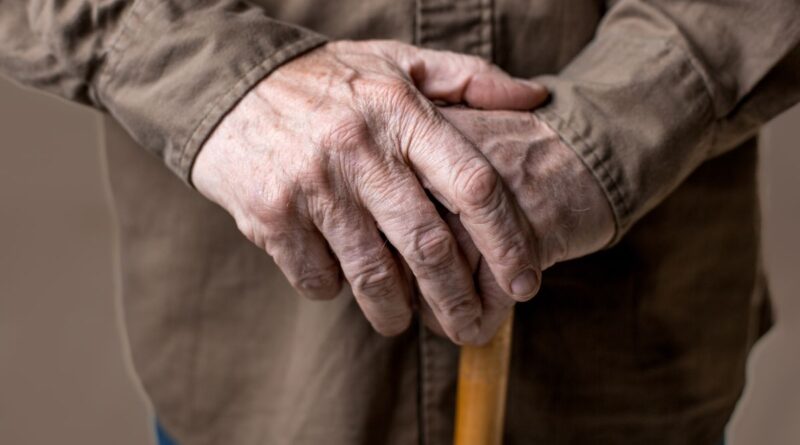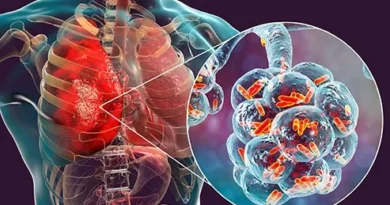Parkinson’s Disease – Symptoms, Causes and Treatment
Parkinson’s disease, also known as Paralysis agitans or shaking palsy, is serious chronic disease of the nervous system. It is characterised by stiffness of muscles and a continuous tremor or shake. It is a disease of the extra-pyramidal system.
Symptoms
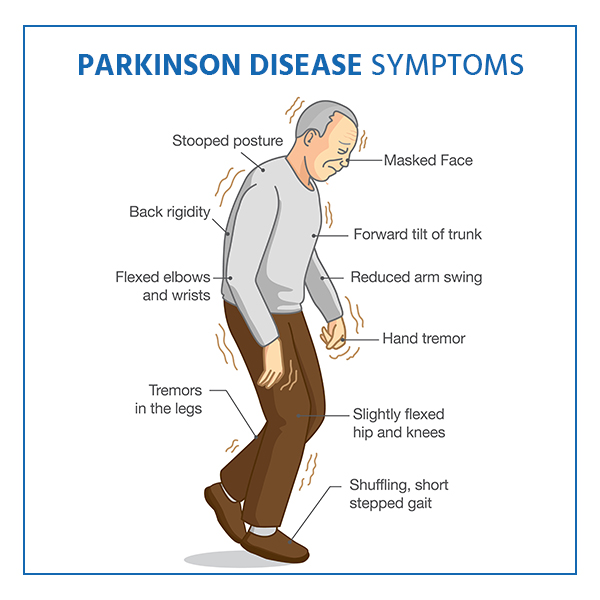
The description of the disease originally given by Dr. James Parkinson of Shoreditch in 1817 is as follows : “involuntary tremulous motion, which lessened muscular power, in parts not in action and even when supported, with a propensity to bend the trunk forwards, and to pass from a walking to a running pace, the senses and intellect being uninjured”. The patient shows a combination of tremor of the limbs and muscular stiffness. These tremors are more noticeable when the patient is at rest, and tend to disappear when he attempts to move or when he is asleep. The tremors are more pronounced, when he is excited or fatigued.
Older patients occasionally exhibit involuntary rapid jerking movements of their arms and legs. In a less extreme form the condition presents as purposeless mastication and lip smacking movements. The condition is embarrassing both to the patient and his relatives, but; is not associated with mental impairment and rarely causes severe incapacity.
Later, there may be impairment of speech, and the patient may complain of cramping pains in the back because of muscle spasm. His mind usually remains clear, and his other sensations are normal. In many cases, the patient may have only a mild form of Parkinson’s disease and continue this way for many years before any serious symptoms develop. In severe and advanced cases, however, the patient is not able to move, and presents a distressing spectacle, for his mind may be uninjured while he cannot speak or write.
Causes
The brain changes that lead to parkinsonism are not fully understood. It, however, appears that they involve the nerve cells containing melanin, the pigment that gives skin its colour. These cells, called substantia nigra, are concentrated in the part of the brain called the basal ganglia. As the cells deteriorate, production of dopamine – (a chemical that carries messages within the brain) falls, and the result is the charateristic symptoms.
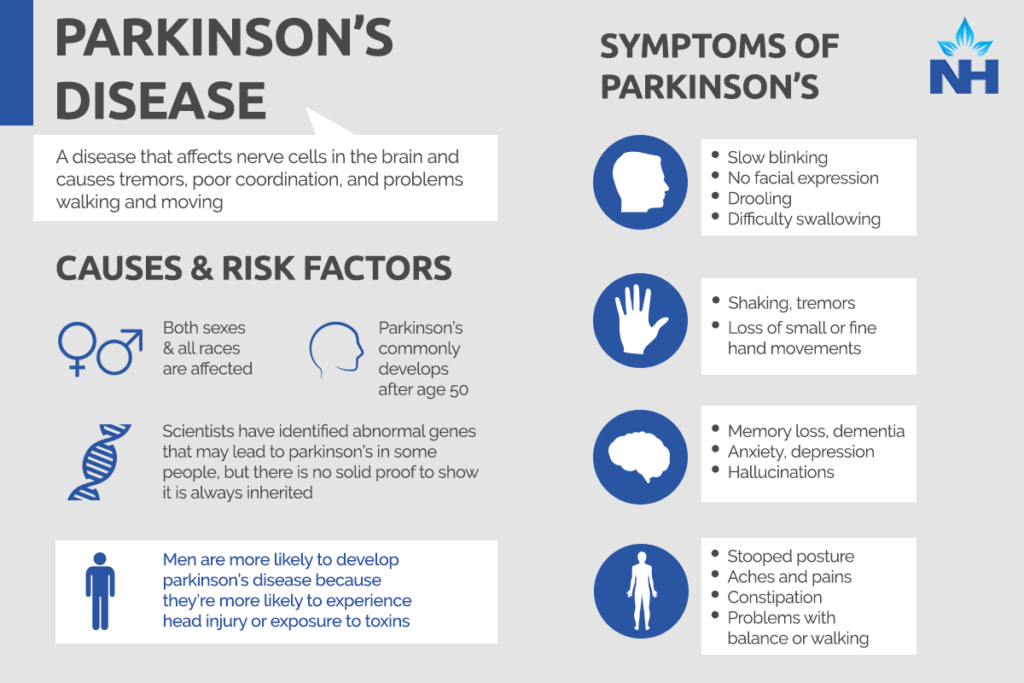
Parkinson’s disease may follow severe attacks of encephalitis or some type of poisoning, such as carbon monoxide. In older patients, this type of palsy may be due to hardening of the arteries in the certain vessels leading to the brain. In most cases, however, the disease begins to show itself in later middle age, and is considered to be a consequence of ‘degeneration’, particularly in the basal ganglia.
Parkinson’s disease may also result from deficiency of antioxidant Vitamin E earlier in life. But, in most cases the cause of Parkinson’s disease, in unknown.
Treatment
Diet plays an important role in the treatment of Parkinson’s disease. To begin with, the patient should resort to a short juice fast for five days. In this regime, he should take a glass of fresh fruit or vegetable juice, diluted with water on 50:50 basis, every two hours from 8 a.m. to 8 p.m. Fruits and vegetables which may be used for juices are apple, pineapple, grapes, orange, tomato, carrot, cabbage and spinach.
Fruit Diet
After the short juice fast, the patient may adopt an all fruit diet for further five days. During this period, he should take three meals a day of fresh juicy fruits, such as apple, pear, peach, papaya, grapes, orange and pineapple, at five hourly intervals. Thereafter, he may gradually adopt a well-balanced lacto-vegetarian diet. The emphasis should be on raw seeds, nuts and grains, plenty of sprouts, raw milk, preferably goat’s milk, and raw fruits and vegetables. Green leafy vegetables and yellow turnips are especially beneficial. Sesame seeds and sesame seed butter can be taken with beneficial results. In general, a low-protein diet of raw, organically grown foods is best for the patient with Parkinson’s disease.
The patient should avoid tea, coffee, chocolate, salt, spices, condiments, pickles, flesh foods, white flour and white sugar and all product made from them. He should also avoid all processed, tinned, canned and frozen foods. The short juice fast followed by an all fruit diet should be repeated at monthly intervals till condition improves.
The patient should always follow certain rules regarding eating. These include taking of water or other liquids half an hour before and one hour after a meal and not with meals, eating very slowly and chewing your food as thoroughly as possible and never eat to full stomach.
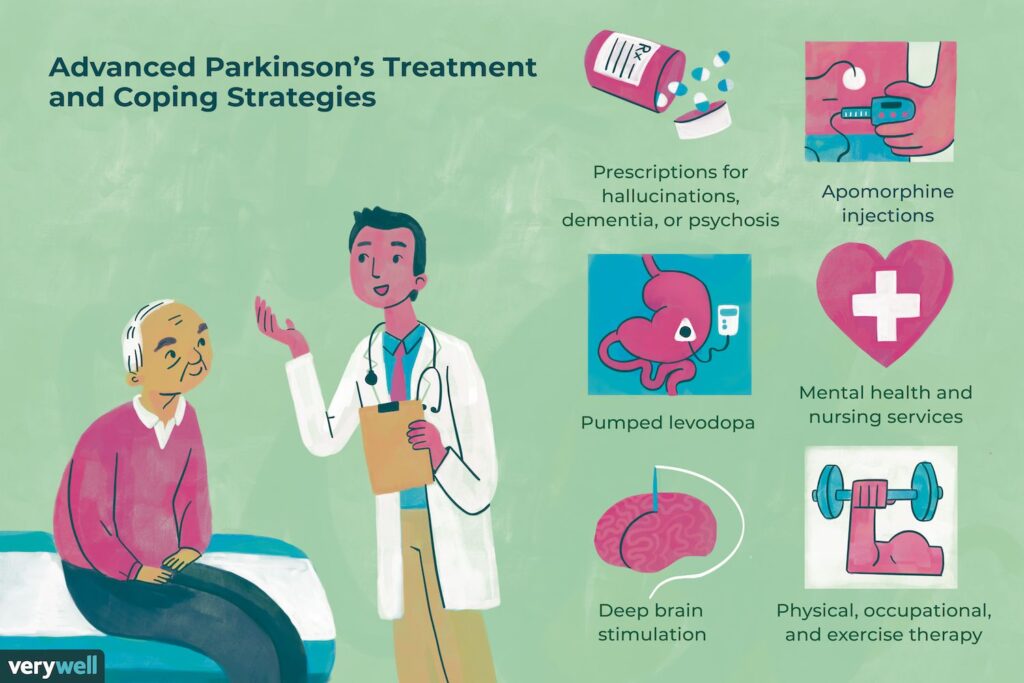
Vitamin E
Use of vitamin E in high doses is considered beneficial in the treatment of Parkinson’s disease. There is preliminary evidence to suggest that massive doses of Vitamin E say, 800 to 3000 IU daily may slow down the progress of the disease. Extensive studies about the efficacy of Vitamin E therapy for Parkinson’s disease are, however, still being carried out.
Yoga
Stress can lead to Parkinsonism, Meditation and relaxation methods, especially Shavasana can help reduce it. Combining meditation with yoga may also improve muscle tone and control. Meditation can also be helpful in inducing sleep, if insomnia is a problem.
Everything possible should be done to help the patient to maintain a cheerful mental outlook. He should remain as active as possible and lead a quite life. Hot moist packs may be applied to the stiffened muscles which should also be gently massaged. The daily warm bath are useful. Fresh air and light exercise, especially walking, are essential to the treatment of Parkinson’s disease.

